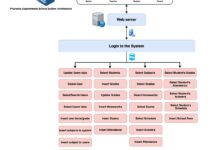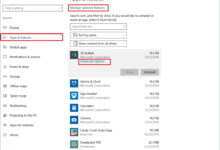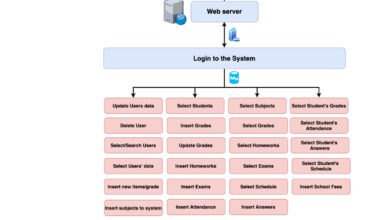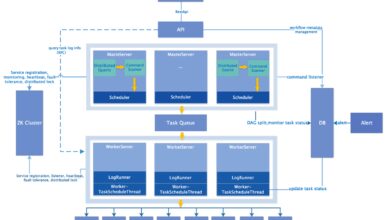System Design Interview: 7 Ultimate Secrets to Crush Your Next Tech Interview
Landing your dream tech job? Mastering the system design interview is your golden ticket. It’s not just about coding—it’s about thinking big, scaling smart, and impressing top-tier engineering teams.
What Is a System Design Interview?

A system design interview evaluates your ability to design scalable, reliable, and maintainable systems under real-world constraints. Unlike coding interviews that focus on algorithms, this round tests your architectural thinking, trade-off analysis, and problem-solving at scale.
Core Objectives of the Interview
The primary goal is to assess how well you can break down a complex problem into manageable components. Interviewers want to see if you can:
- Define system requirements (functional and non-functional)
- Propose a high-level architecture
- Handle scalability, availability, and fault tolerance
- Make informed technology choices
- Anticipate bottlenecks and propose solutions
“It’s not about getting the ‘right’ answer—it’s about demonstrating structured thinking.” — Alex Xu, author of System Design Interview – An Insider’s Guide
Common Formats and Duration
These interviews typically last 45–60 minutes and come in two main formats:
- Open-ended design: You’re asked to design a large-scale system like Twitter, Uber, or a URL shortener.
- Deep-dive on existing systems: You may be asked to improve or debug a part of a real system, such as optimizing database queries or reducing latency.
Some companies use collaborative tools like Miro, Excalidraw, or Google Docs for diagramming, while others prefer verbal explanations with light sketching.
Why System Design Interviews Matter in Tech Hiring
Top tech companies like Google, Meta, Amazon, and Netflix rely heavily on system design interviews to identify engineers who can think beyond code. These interviews separate junior developers from senior-level thinkers.
Role in Senior Engineering Evaluations
For mid-to-senior level roles, system design is often the most critical evaluation stage. Why? Because senior engineers are expected to:
- Lead technical projects
- Design systems that serve millions of users
- Collaborate across teams (frontend, backend, DevOps, security)
- Mentor junior engineers
A strong performance signals leadership potential and technical maturity.
Evolution of the Interview Process
Over the past decade, system design interviews have evolved from niche assessments to standard practice. As cloud computing, microservices, and distributed systems became mainstream, the need for engineers who understand these paradigms grew exponentially.
According to a 2023 report by Levels.fyi, over 80% of software engineering roles at FAANG companies include at least one system design round.
Key Components of a Successful System Design Interview
To ace a system design interview, you need more than technical knowledge—you need a framework. Let’s break down the essential components.
Requirement Clarification
Never jump into design without clarifying requirements. Start by asking smart questions:
- What is the expected scale? (e.g., 10K vs. 10M users)
- Is it read-heavy or write-heavy?
- What are the latency and availability expectations?
- Are there geographic constraints?
For example, designing a global video streaming platform requires different considerations than a local ride-sharing app.
Back-of-the-Envelope Estimation
Also known as “back-of-napkin” calculations, this step involves estimating key metrics:
- Requests per second (QPS)
- Storage needs (daily and yearly)
- Bandwidth consumption
- Memory requirements
For instance, if you’re designing Instagram, you might estimate:
- 10 million daily active users
- Each uploads 1 photo/day (~5 MB)
- Total daily storage: ~50 TB
- Peak QPS: ~1,200 image uploads per second
These numbers guide your architectural decisions.
High-Level Architecture Design
This is where you draw your system diagram. Start simple and iterate. Common components include:
system design interview – System design interview menjadi aspek penting yang dibahas di sini.
- Load balancers
- Web servers
- Application servers
- Database(s)
- Cache layers (e.g., Redis)
- Message queues (e.g., Kafka)
- CDNs for static content
Use layered architecture: client → API gateway → microservices → data storage.
Common System Design Interview Questions and How to Approach Them
While no two interviews are identical, certain questions appear repeatedly. Let’s explore the most common ones and how to tackle them.
Design a URL Shortening Service (e.g., TinyURL)
This classic question tests your understanding of hashing, database design, and scalability.
- Requirements: Generate short URLs, redirect users, handle high traffic.
- Key decisions: Base62 encoding, hash functions (MD5/SHA vs. random generation), database sharding.
- Scalability: Use DNS-level routing and CDNs for fast redirects.
Check out TinyURL’s engineering blog for real-world insights.
Design a Social Media Feed (e.g., Twitter)
This evaluates your grasp of data modeling, caching strategies, and real-time updates.
- Options: Pull-based (fetch on refresh) vs. push-based (precompute feeds).
- Trade-offs: Push scales poorly for celebrities; pull causes latency.
- Solution: Hybrid model—push for followers < 10K, pull for larger accounts.
Twitter’s actual architecture uses a combination of FlockDB, Manhattan, and Heron for stream processing.
Design a Chat Application (e.g., WhatsApp)
Focuses on real-time communication, message delivery guarantees, and end-to-end encryption.
- Protocols: WebSocket or MQTT for persistent connections.
- Delivery: At-least-once vs. exactly-once semantics.
- Storage: Shard messages by user ID or conversation ID.
Consider using Firebase or Pusher for prototyping, but understand the underlying infrastructure.
Step-by-Step Framework for Tackling Any System Design Interview
Having a repeatable framework is crucial. Follow this 6-step process to stay organized and impress your interviewer.
Step 1: Clarify Requirements
Ask open-ended questions to define scope. Example:
- “Should the system support photos, videos, or text only?”
- “What’s the expected uptime? 99% or 99.99%?”
- “Do we need offline sync capabilities?”
This shows you think critically about product needs.
Step 2: Estimate Scale
Quantify the problem. Use round numbers and powers of 10.
- Users: 1M DAU → ~10K concurrent
- Writes: 10K requests/sec
- Reads: 100K requests/sec (10:1 read/write ratio)
- Storage: 1KB per record × 10K writes/sec = ~864 GB/day
These estimates help you choose appropriate technologies.
Step 3: Define APIs
Sketch RESTful or GraphQL endpoints. For a ride-sharing app:
POST /rides– Request a rideGET /rides/{id}– Get ride statusPUT /drivers/location– Update driver location
Well-defined APIs clarify the contract between components.
Step 4: Design Data Model
Choose between SQL and NoSQL based on access patterns.
- SQL: Strong consistency, complex queries (e.g., user profiles)
- NoSQL: High write throughput, horizontal scaling (e.g., ride logs)
Normalize when needed, but denormalize for performance in read-heavy systems.
system design interview – System design interview menjadi aspek penting yang dibahas di sini.
Step 5: High-Level Design
Draw boxes and arrows. Label components clearly. Include:
- Client devices
- API gateways
- Microservices (auth, ride-matching, payment)
- Message queues for async processing
- Databases and caches
Explain why you chose each component.
Step 6: Deep Dive into Critical Components
Pick one or two challenging areas to explore in depth:
- How does ride-matching work?
- How do you ensure exactly-once message delivery?
- How is data replicated across regions?
This demonstrates depth of knowledge.
Common Pitfalls to Avoid in a System Design Interview
Even strong candidates fail due to avoidable mistakes. Here are the most common ones.
Jumping Straight into Design
Many candidates start drawing diagrams before understanding the problem. This signals poor communication and lack of structure.
“The first five minutes should be all questions.” — Gayle Laakmann McDowell, author of CareerCup
Always clarify requirements first.
Ignoring Trade-offs
There’s no perfect solution. Interviewers want to see you weigh pros and cons.
- Consistency vs. availability (CAP theorem)
- Latency vs. cost
- Development speed vs. long-term maintainability
For example, choosing eventual consistency allows higher availability but risks stale reads.
Overcomplicating the Design
Don’t throw in Kubernetes, Kafka, and GraphQL unless they’re necessary. Start simple—monolith first, then scale.
As per Martin Fowler’s principles, “YAGNI” (You Aren’t Gonna Need It) applies here. Build what’s needed now.
How to Prepare for a System Design Interview: Resources and Practice
Preparation is key. Unlike coding, system design requires broad knowledge and pattern recognition.
Recommended Books
Start with foundational texts:
- System Design Interview – An Insider’s Guide by Alex Xu
- Designing Data-Intensive Applications by Martin Kleppmann
- CareerCup by Gayle Laakmann McDowell
These books cover theory, patterns, and real interview questions.
Online Courses and Platforms
Interactive learning helps solidify concepts:
- Grokking the System Design Interview (Educative)
- Design Gurus – Comprehensive system design course
- LeetCode’s system design section
These platforms simulate real interview conditions.
Practice with Mock Interviews
Nothing beats real practice. Use platforms like:
system design interview – System design interview menjadi aspek penting yang dibahas di sini.
- Pramp (free peer-to-peer mock interviews)
- Interviewing.io (anonymous practice with engineers from top companies)
- Gainlo (paid, personalized coaching)
Get feedback on communication, structure, and technical depth.
Advanced Topics That May Appear in Senior-Level System Design Interviews
For senior or staff engineer roles, expect deeper technical scrutiny. Here are advanced topics to master.
Distributed Consensus Algorithms
Understand how systems achieve agreement in unreliable networks.
- Paxos: Theoretical foundation for consensus
- Raft: Easier to understand, used in etcd and Consul
- ZooKeeper: Coordination service for distributed systems
Be ready to explain leader election and log replication.
Microservices vs. Monolith: When to Use Which?
Microservices aren’t always better. Know the trade-offs:
- Monolith: Simpler deployment, ACID transactions
- Microservices: Independent scaling, tech diversity, but complex orchestration
Netflix moved to microservices for scalability; Basecamp stayed monolithic for simplicity.
Global System Design and Multi-Region Deployment
For systems serving users worldwide:
- Data replication strategies (active-active, active-passive)
- DNS routing (GeoDNS)
- Multi-region databases (e.g., Google Spanner, AWS Aurora Global Database)
- Compliance with data sovereignty laws (GDPR, CCPA)
Latency between regions can be 100–200ms—design accordingly.
Real-World Case Studies: What Top Companies Actually Build
Studying real architectures gives you an edge. Let’s look at how giants solve problems.
How Netflix Handles 1 Billion Hours of Streaming Monthly
Netflix uses a highly decentralized microservices architecture:
- Over 1,000 microservices
- Chaos Monkey for resilience testing
- Open-source tools like Hystrix (circuit breaker)
- Custom CDN called Open Connect
Learn more at Netflix Tech Blog.
How Uber Manages Real-Time Ride Matching
Uber’s system must match riders and drivers in under 2 seconds.
- Geohashing to partition maps
- Redis for in-memory driver location storage
- Fare estimation using historical traffic data
- Apache Kafka for event streaming
Their architecture balances low latency with high availability.
How Google Scales Search Across the Globe
Google processes over 8.5 billion searches per day.
- MapReduce for distributed data processing
- Bigtable for structured data storage
- Spanner for globally consistent databases
- Edge caching via Google Front End (GFE)
Read the original Google File System and MapReduce papers for deep insights.
Final Tips to Ace Your System Design Interview
You’ve learned the framework, pitfalls, and real-world examples. Now, let’s seal the deal with actionable tips.
Communicate Your Thought Process Clearly
Speak aloud as you design. Say things like:
system design interview – System design interview menjadi aspek penting yang dibahas di sini.
- “I’m considering Redis here because we need low-latency reads.”
- “I’ll go with sharding because a single database won’t handle 10K writes/sec.”
- “Let me sketch this out first before diving deeper.”
Interviewers grade your thinking, not just the final diagram.
Be Open to Feedback and Suggestions
If the interviewer suggests an alternative, don’t get defensive. Say:
- “That’s a great point. I hadn’t considered that. Let me adjust my design.”
- “How would that impact consistency in a partition scenario?”
This shows collaboration and adaptability—key traits for senior roles.
Practice, Practice, Practice
There’s no substitute for repetition. Aim to solve at least 15–20 system design problems before your interview.
- Start with basic ones (URL shortener, rate limiter)
- Move to complex ones (distributed cache, file-sharing service)
- Review solutions from trusted sources
Track your progress in a journal or Notion workspace.
What is the most common system design interview question?
The most common question is designing a URL shortening service like TinyURL or bit.ly. It’s popular because it touches on hashing, database design, scalability, and API design—all fundamental concepts in a compact problem.
How long should I prepare for a system design interview?
Most engineers need 4–8 weeks of dedicated preparation. If you’re new to distributed systems, start with foundational reading (e.g., Designing Data-Intensive Applications) and gradually move to mock interviews. Daily practice for 1–2 hours is ideal.
Do I need to know coding for a system design interview?
Not extensively. While you won’t write full programs, you may need to sketch pseudocode for critical algorithms (e.g., consistent hashing, leader election). Focus more on architecture than syntax.
Can I use diagrams during the interview?
Absolutely. In fact, you’re expected to. Use simple boxes and arrows to represent components. Most companies provide digital whiteboards (Miro, Jamboard) or accept hand-drawn sketches on paper. Clarity matters more than artistic skill.
What if I don’t know the answer to a question?
It’s okay not to know everything. Admit it gracefully: “I’m not familiar with that specific technology, but here’s how I’d approach learning it.” Or, “Based on similar systems I’ve studied, I’d guess it works like this…” Show curiosity and structured thinking.
Mastering the system design interview is a journey, not a sprint. It requires understanding distributed systems, practicing real-world scenarios, and refining your communication. Whether you’re aiming for a senior role at a FAANG company or building your own startup, these skills are invaluable. Use the frameworks, learn from real architectures, avoid common pitfalls, and practice relentlessly. With the right preparation, you won’t just pass the interview—you’ll stand out as a visionary engineer.
system design interview – System design interview menjadi aspek penting yang dibahas di sini.
Further Reading:









